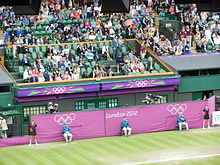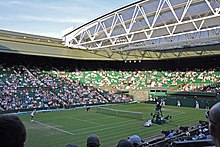
The Championships, commonly known simply as Wimbledon, is the oldest tennis tournament in the world and is regarded by many as the most prestigious. It has been held at the All England Lawn Tennis and Croquet Club in Wimbledon, London, since 1877 and is played on outdoor grass courts, with retractable roofs over the two main courts since 2019.
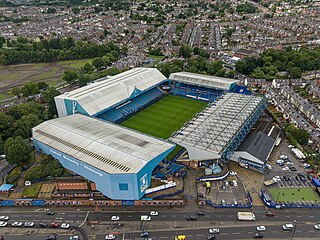
Hillsborough Stadium is a football stadium in Sheffield, England. It has been the home of Sheffield Wednesday since opening in 1899.

Melbourne Park is a sports venue in the Melbourne Sports and Entertainment Precinct in Melbourne, Victoria, Australia. Since 1988, Australia's bicentenary, Melbourne Park has been home of the Australian Open Grand Slam tennis tournament played annually in January. The park has multiple venues where the Australian Open matches take place. Rod Laver Arena is the largest venue with a capacity of 15,000, while John Cain Arena seats 10,500 and Margaret Court Arena 7,500. The three venues feature retractable roofs, allowing events to be played indoors or outdoors. Besides, there is the Show Court 3 and 1573 Arena which both have a 3,000 seating capacity, and the new 5000-seat Kia Arena. In total there are 35 outdoor Greenset tennis courts at Melbourne Park.

The Queen's Club Championships is an annual tournament for men's tennis, held on grass courts at the Queen's Club in West Kensington, London. The event is part of the ATP Tour 500 series on the Association of Tennis Professionals (ATP) Tour. It is currently advertised as the "cinch Championships" after its title sponsor.
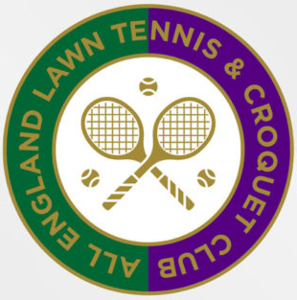
The All England Lawn Tennis and Croquet Club (AELTC), also known as the All England Club, based at Church Road, Wimbledon, London, England, is a private members' club. It is best known as the venue for the Wimbledon Championships, the only Grand Slam tennis event still held on grass. Initially an amateur event that occupied club members and their friends for a few days each summer, the championships have become far more prominent than the club itself. However, it still operates as a members' tennis club.

The Halle Open is a men's tennis tournament held in Halle, North Rhine-Westphalia, Germany. Held since 1993, the event is played on four outdoor grass courts and is a part of the ATP Tour 500 series on the ATP Tour schedule.
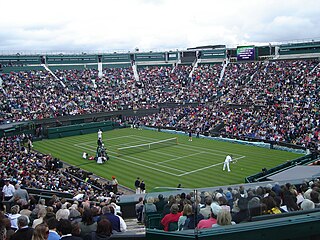
The 2007 Wimbledon Championships was a tennis tournament played on grass courts at the All England Lawn Tennis and Croquet Club in Wimbledon, London in the United Kingdom. It was the 121st edition of the Wimbledon Championships and were held from 25 June to 8 July 2007. It was the third Grand Slam tennis event of the year.
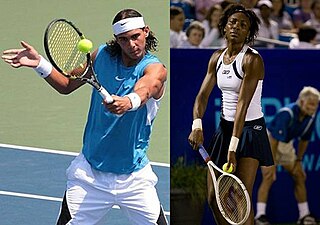
The 2008 Wimbledon Championships was a tennis tournament played on grass courts at the All England Lawn Tennis and Croquet Club in Wimbledon, London in the United Kingdom. It was the 122nd edition of the Wimbledon Championships and were held from 23 June to 6 July 2008. It was the third Grand Slam tennis event of the year.
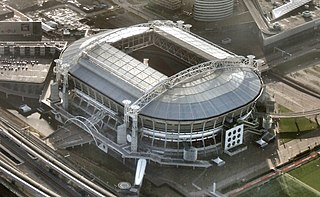
A retractable roof is a roof system designed to roll back the roof of a structure so that the interior of the facility is open to the outdoors. Retractable roofs are sometimes referred to as operable roofs or retractable skylights. The term operable skylight, while quite similar, refers to a skylight that opens on a hinge, rather than on a track.
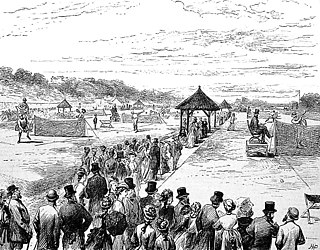
The 1877 Wimbledon Championship was a men's tennis tournament held at the All England Croquet and Lawn Tennis Club in Wimbledon, London. It was the world's first official lawn tennis tournament, and was later recognised as the first Grand Slam tournament or "Major". The AEC & LTC had been founded in July 1868, as the All England Croquet Club. Lawn tennis was introduced in February 1875 to compensate for the waning interest in croquet. In June 1877 the club decided to organise a tennis tournament to pay for the repair of its pony roller, needed to maintain the lawns. A set of rules was drawn up for the tournament, derived from the first standardised rules of tennis issued by the Marylebone Cricket Club in May 1875.

No. 1 Court is a tennis court at the All England Lawn Tennis and Croquet Club, Wimbledon, London. Opened in 1997, it is used primarily for the Wimbledon Championships. It also occasionally plays host to Great Britain's Davis Cup home ties, as Centre Court is reserved for the Grand Slam tournament, with the one exception of the 2012 Olympic Games.

The Shanghai Masters is an annual tennis tournament for male professional players held in Shanghai, China. It is played on outdoor hard courts at the Qizhong Forest Sports City Arena in the Minhang District, and is held in early October. The tournament is part of the nine ATP Tour Masters 1000 events on the ATP Tour, and is the only one not played in Europe or North America.

No. 3 Court is a tennis court at the All England Lawn Tennis and Croquet Club, Wimbledon, London. Unlike the other three Grand Slam events, Wimbledon does not name its main courts after famous players, choosing instead to use numbers, with the exception of Centre Court.
The 2014 Wimbledon Championships was a tennis tournament played on grass courts at the All England Lawn Tennis and Croquet Club in Wimbledon, London in the United Kingdom. It was the 128th edition of the Wimbledon Championships and were held from 23 June to 6 July 2014. It was the third Grand Slam tennis event of the year and was part of the ATP World Tour, the WTA Tour, the ITF Junior Tour and the NEC Tour. The championships were organised by the All England Lawn Tennis and Croquet Club and the International Tennis Federation.

The 2012 Wimbledon Championships Men's Singles final was the championship tennis match of the Men's Singles tournament at the 2012 Wimbledon Championships. It pitted six-time champion Roger Federer and Andy Murray against each other in a Grand Slam final for the third time. After 3 hours and 24 minutes, Federer emerged victorious 4–6, 7–5, 6–3, 6–4.
The 2016 Wimbledon Championships was a Grand Slam tennis tournament which took place at All England Lawn Tennis and Croquet Club in Wimbledon, London, United Kingdom. The main draw commenced on 27 June 2016 and concluded on 10 July 2016.
The 2017 Wimbledon Championships was a Grand Slam tennis tournament that took place at the All England Lawn Tennis and Croquet Club in Wimbledon, London, United Kingdom. The main draw matches commenced on 3 July 2017 and concluded on 16 July 2017. Roger Federer won the gentlemen's singles title for a record eighth time, surpassing Pete Sampras and William Renshaw, who both won the gentlemen's singles title seven times. Garbiñe Muguruza won the ladies' singles title.
The 2022 Wimbledon Championships was a Grand Slam tier tennis tournament that took place at the All England Lawn Tennis and Croquet Club in Wimbledon, London, United Kingdom. Novak Djokovic successfully defended his gentlemen's singles title to claim his 21st major title, defeating Nick Kyrgios in the final. Ashleigh Barty was the reigning ladies' champion, but did not defend her title after retiring from professional tennis in March 2022. The ladies' singles title was won by Elena Rybakina, who defeated Ons Jabeur in the final.



